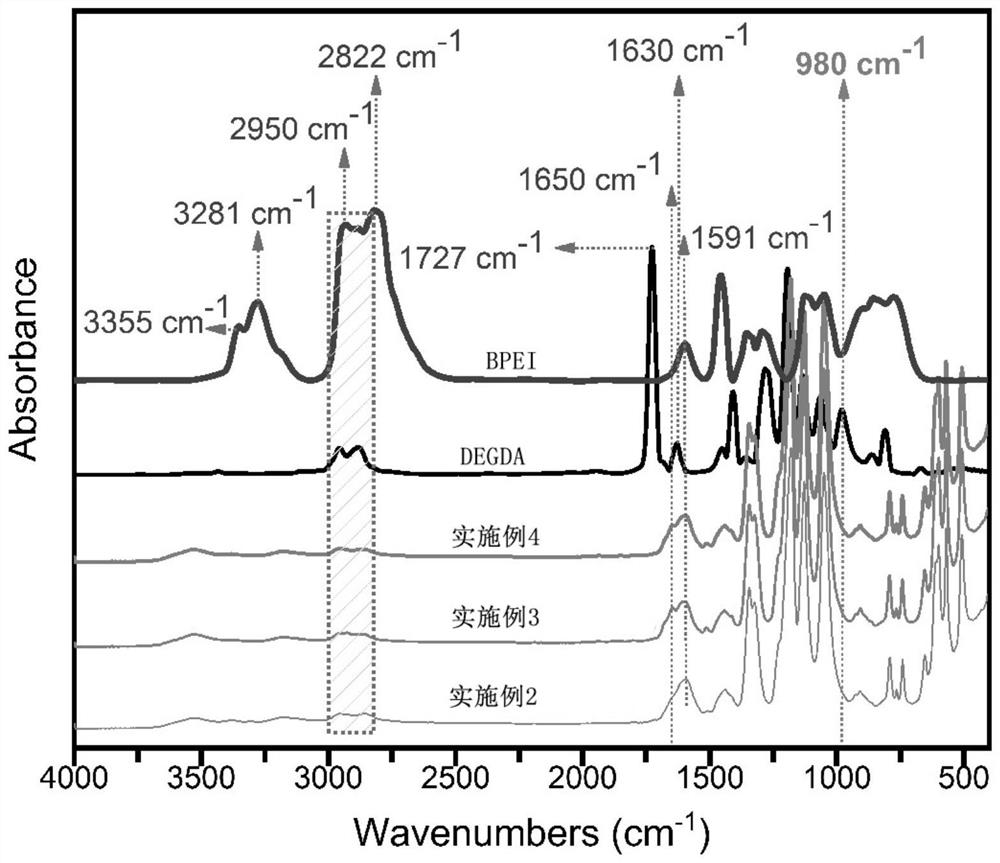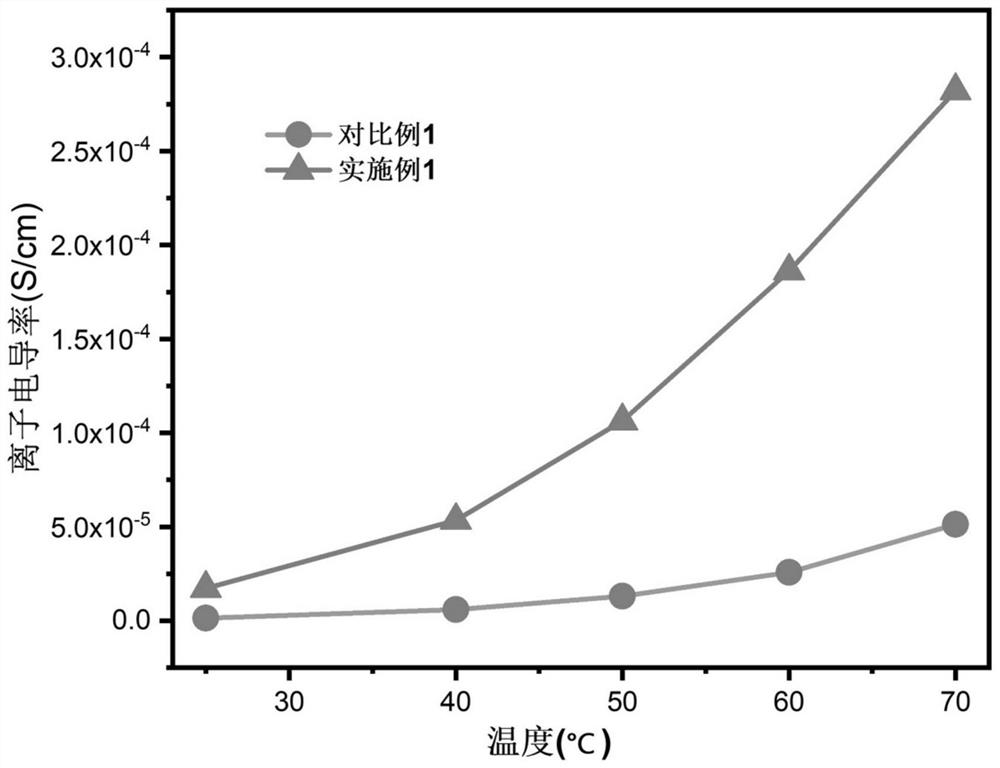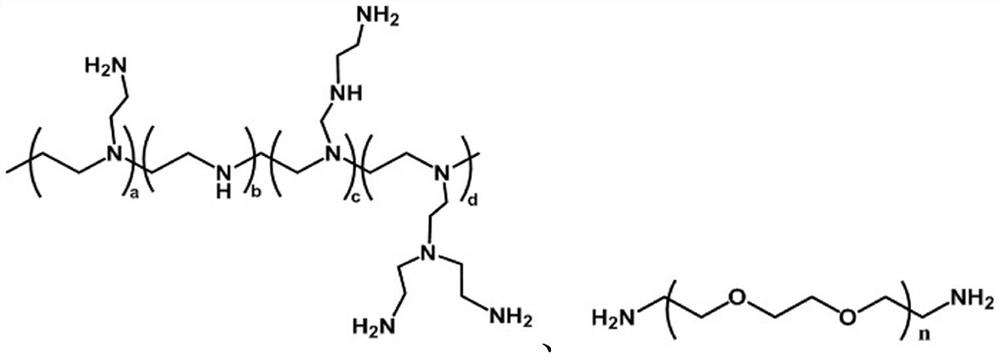Method and Application of In-Situ Thermal Initiation Preparation of All-Solid Polymer Electrolyte
An all-solid polymer, thermally induced technology, applied in solid electrolytes, non-aqueous electrolytes, non-aqueous electrolyte batteries, etc., can solve the problem of in-situ preparation of polymer batteries that are not suitable for direct in-situ preparation of polymer electrolytes, and increase the preparation cost and grafting rate of polymer electrolytes. Unable to precisely control and other problems, to achieve the effects of reducing interface wetting and modification, improving interface compatibility, and wide salt selectivity
- Summary
- Abstract
- Description
- Claims
- Application Information
AI Technical Summary
Problems solved by technology
Method used
Image
Examples
Embodiment 1
[0028] Components and parts by weight thereof in the mixed solution are as follows:
[0029] Branched Polyethyleneimine (BPEI) 40
[0030] Diethylene glycol diacrylate (DEGDA) 20
[0031] LiTFSI 20
[0032] Methanol 20
[0033] The in-situ reaction temperature is 60° C., and the reaction time is 1 h.
Embodiment 2
[0035] Components and parts by weight thereof in the mixed solution are as follows:
[0036] BPEI 21
[0037] DEGDA 7
[0038] LiTFSI 56
[0039] Methanol 16
[0040] The in-situ reaction temperature is 25°C, and the reaction time is 8h.
Embodiment 3
[0042] Components and parts by weight thereof in the mixed solution are as follows:
[0043] BPEI 18
[0044] DEGDA 6
[0045] LiTFSI 60
[0046] Methanol 16
[0047] The in-situ reaction temperature is 40°C, and the reaction time is 3.5h.
PUM
 Login to View More
Login to View More Abstract
Description
Claims
Application Information
 Login to View More
Login to View More - R&D
- Intellectual Property
- Life Sciences
- Materials
- Tech Scout
- Unparalleled Data Quality
- Higher Quality Content
- 60% Fewer Hallucinations
Browse by: Latest US Patents, China's latest patents, Technical Efficacy Thesaurus, Application Domain, Technology Topic, Popular Technical Reports.
© 2025 PatSnap. All rights reserved.Legal|Privacy policy|Modern Slavery Act Transparency Statement|Sitemap|About US| Contact US: help@patsnap.com



